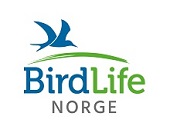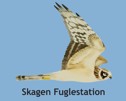
|
|
Grågås på trekk Flertallet av artene ser ut til å ankomme tidligere. Blant disse har grågås forskjøvet sin ankomstdato mest, med 14,8 dager tidligere ankomst. Denne arten viser i tillegg en statistisk signifikant endring. Årsrapporten 2021 er tilgjengelig!
(Årsrapporten 2021 fra Jomfruland og Lista kan leses HER) Lave fangstall Fangsttallene for Jomfruland Fuglestasjon i 2021 var antallsmessig under gjennomsnittet med 30,2 % om våren og 33,0 % på høsten. Fangsttallene for 2021 havnet samlet sett under gjennomsnittet også for Lista Fuglestasjon. Dette hovedsakelig grunnet 36,1 % lavere høstfangsttall enn normalt. Vårfangsten på Lista var 8,8 % over gjennomsnittet. På Lista ble det registrert i standardfangsten 2596 individer, noe som er det nest laveste antallet siden 1990. Også feltregistreringene viser at bekymringsfullt mange av artene hadde spesielt lave antall. Ankomsten var senere enn forventet Vår fenologiindeks viser at de 30 utvalgte artene av trekkfugler i gjennomsnitt ankommer 3,1 dager tidligere i 2021 enn det de gjorde da overvåkingen startet i 1990. Ankomsten i 2021 var derimot 4,6 dager senere enn forventet i forhold til utviklingen i vår indeks. Gjennomgående kjølig vær fra begynnelsen av april til ca. 10. mai var trolig hovedårsaken til at hele 24 av 30 arter kom senere enn forventet, til dels mye senere. En generell negativ utvikling I det store bildet er det naturlig å se de lave antallene for mange av fugleartene som ble registrert høsten 2021 ved Jomfruland og Lista i lys av den generelle negative utviklingen for fuglebestandene. En utvikling som ble understreket i den nye rødlisten publisert 24. november, og rapporter som viser generell nedgang i Europas fuglebestander (Bl.a. Burns m.fl 2021.). Selv om vi på Lista ikke bare registrerer helnorske populasjoner, er de lave tallene for vadefuglene tjeld, vipe, brushane, småspove, storspove og rødstilk, samt tallene for hettemåke, havhest og makrellterne med på å bekrefte den triste utviklingen vi ser i den norske rødlisten. Viktig og unik overvåking Overvåkingen ved fuglestasjonene er unik i norsk sammenheng ved at den gir informasjon om fenologi (trekkforløp) hos våre vanligste spurvefugler. Dette gjør oss bl.a. i stand til å se hvordan klimaendringene virker inn på fugletrekket. Overvåkingen er også en av få som kan gi oss informasjon om vinteroverlevelse og hekkesuksess hos de forskjellige artene. I tillegg gir den naturligvis viktig informasjon om langtidstrender i bestandene for en rekke fuglearter fra forskjellige naturtyper og miljø, og fra et stort geografisk område. Årsrapporten 2021 fra Jomfruland og Lista kan leses HER. | ||||||

| Merketall | ||||||||||||
|
| Reportasje fra Lista FS i Aftenposten |

|
| Sesongavvik observasjoner | ||||||||||||||||||||||||||||||
|
|
Følg Følg Lista FS på facebook.com |
| Siste 5 på siden |
|
Begynnerkurs i ringmerking: 17.-18. august Årsrapporten 2023 er tilgjengelig! Fuglefestival 2.-3. september Rapport fra våren 2023 Ny rapport: Måling av elektromagnetiske feltstyrke fra fugleradar ved Lista fyr. |
| Nyheter fra NOF |
|
Lille måltrost og den enda... Fine hekkeflåter til ternene... Statsforvalteren sier nei til... Hotell i særklasse Tusenvis av svarttrost: Hvor... Kulturlandskapsarten... BirdLife Norge reagerer på... Hva vet vi om svartand i... |
Lista Fuglestasjon
Fyrveien 6
NO-4563 Borhaug
post@listafuglestasjon.no Tlf: 949 86 793
 |  |


 Bare på norsk
Bare på norsk



